Launch Complex 39: From Saturn to Shuttle to SpaceX and SLS
Space history curator Michael Neufeld explores the history of Kennedy Space Center’s Launch Complex 39, which has seen launches of the Apollo program and Space Shuttle, and will see the return of crewed launches from American soil in May 2020.
/https://tf-cmsv2-smithsonianmag-media.s3.amazonaws.com/blogging/featured/KSC-20200521-PH-KLS03_0044_large.jpg)
When astronauts Doug Hurley and Bob Behnken lift off on the SpaceX Crew Dragon Demo-2 mission to the International Space Station (ISS) soon, they will depart from Kennedy Space Center’s historic Pad 39A. It is the same one used by the last NASA astronauts to launch from American soil, the Space Shuttle Atlantis crew in July 2011. Indeed, Launch Complex 39 A and B have been the site of every U.S. human spaceflight that went into orbit since December 1968, including the Apollo 11 lunar landing. That exclusivity will end eventually, as Boeing will launch its Starliner crews to the ISS from the Space Force side of Cape Canaveral, but NASA’s LC-39 (Launch Complex 39) will continue to serve long into the future.
In 1961, when President John F. Kennedy tasked the National Aeronautics and Space Administration (NASA) with landing humans on the Moon by the end of the decade, the agency had no launch pads or stand-alone center in Florida. Its units were tenants on Cape Canaveral Air Force Station, along with the Army, Navy, and other government organizations. All of NASA’s early human spaceflight missions, and most satellite and space probe flights, lifted off from the USAF facility, which was part of the Atlantic Missile Range. Pads were numbered in the order they were built, starting near the tip of Cape Canaveral and running north, mostly in numerical order. The Mercury-Redstone missions used LC-5, Mercury-Atlas LC-14, and Gemini-Titan LC-19. The last astronauts to lift off from the Air Force side were the Apollo 7 crew on a Saturn IB from LC-34 in October 1968.
The Moon landing challenge immediately confronted NASA, however, with the need for a much bigger rocket. Early plans imagined a booster even larger than the Apollo Saturn V turned out to be. The question was where to fire such a monster; an accident could unleash the force of a small nuclear weapon. Ideas included Florida, the Georgia Sea Islands, and islands in the Pacific, but the agency soon decided to take a large tract on Merritt Island, just north of the Cape, for LC-39. That meant a massive expansion of NASA’s Florida activity. The Cape-based launch division of Wernher von Braun’s Marshall Space Flight Center in Alabama was spun off as the Launch Operations Center in 1962. It acquired its present name, John F. Kennedy Space Center (KSC), immediately after President Kennedy’s assassination in November 1963.
Engineers at NASA and its contractors also quickly decided they needed a new way to assemble and launch such a gigantic rocket. The reigning method was to stack the vehicle and its payload on the pad, usually inside a service structure that would be pulled back before launch. That could take months when problems cropped up, with some exposure to the elements. It was actually inferior to the Soviet system, which was to assemble the rocket horizontally inside a building on a rail-car erector/launcher. They could roll the vehicle out, set it upright, and launch it in one day, demonstrating that capability by orbiting cosmonauts on consecutive days from the same pad in August 1962. American engineers had no insight into that, but decided that they needed their own mobile launch system. Based on the existing tradition, they decided to stack the rocket vertically on a mobile platform inside a building, then move the platform and rocket out to the pad. The question was how? After looking at several ideas, including barges in the subtropical wetlands that were Merritt Island, they settled on a gigantic tracked vehicle. Strip-mining machines inspired the now-iconic Crawler-Transporter.
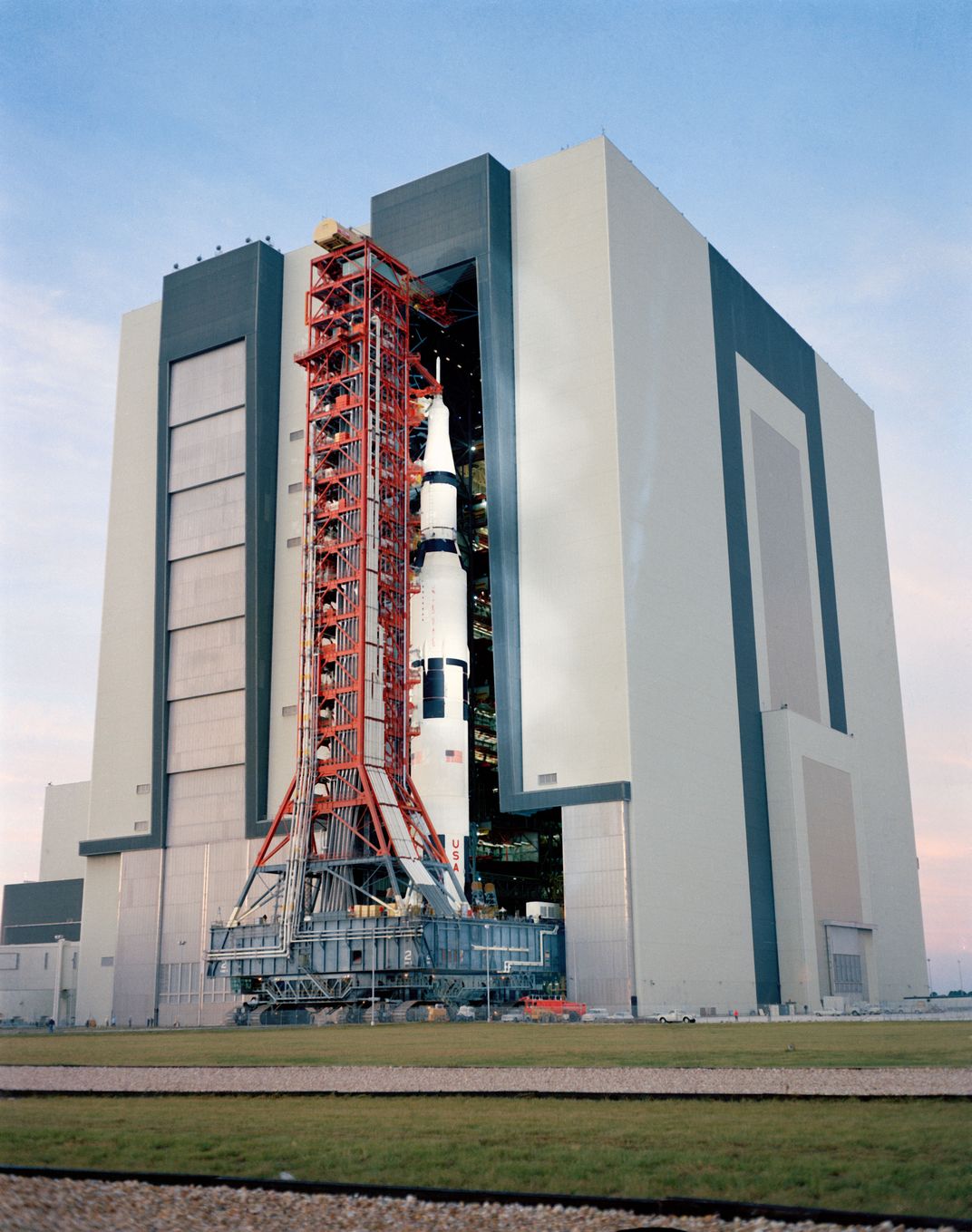
The rockets would be stacked inside the Vertical (later Vehicle) Assembly Building (VAB), which was for a time the world’s largest enclosed human structure. Based on NASA’s optimism about its future in the mid-sixties, it was overbuilt, with four vertical bays, each one of which could contain a Saturn V. There were to be three launch pads, LC-39A, B, and C, but the last was never built. B was constructed largely as a backup, in case a rocket explosion destroyed A. It was used only for Apollo 10, the dress rehearsal for the landing, because it launched only two months before Apollo 11, and preparations for that mission were already underway at 39A.
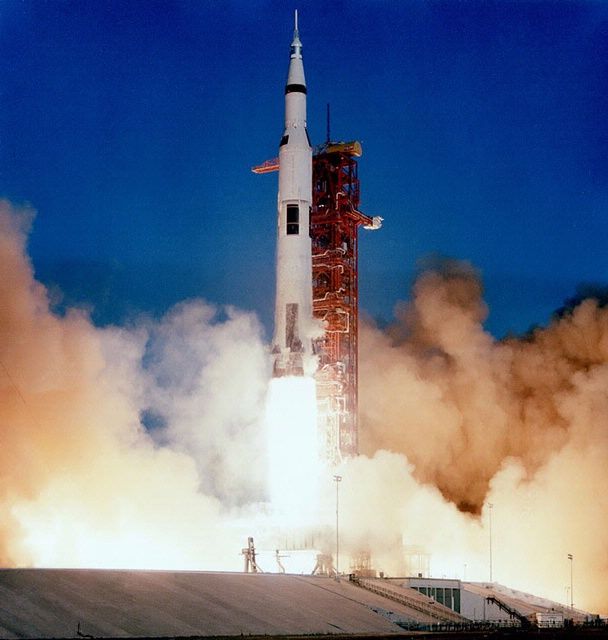
The first astronauts to launch from LC-39A were the Apollo 8 crew, Frank Borman, Jim Lovell, and Bill Anders, on the first mission to the Moon, the Christmas 1968 flight to lunar orbit. After Apollo, the Skylab space station, a converted Saturn V third stage on two active stages, also flew from A. But all three Skylab crews ascended to space from 39B on Saturn IBs. To save money, NASA mothballed the old Saturn IB Pads 34 and 37, and put a “milk stool” on one of the launch platforms, lifting the rocket over a hundred feet so that the rocket’s second stage, which was the same as the Saturn V’s third, would be at the right height for the propellant lines, cables, and astronaut access arm. KSC used that odd-looking launcher and Pad 39B for the Apollo Soyuz Test Project in 1975 as well. Then, no American astronauts flew for nearly six years—the longest hiatus ever. (Since 2011, Americans have been riding Russian Soyuz spacecraft to and from the ISS in the absence of a U.S. launcher.)
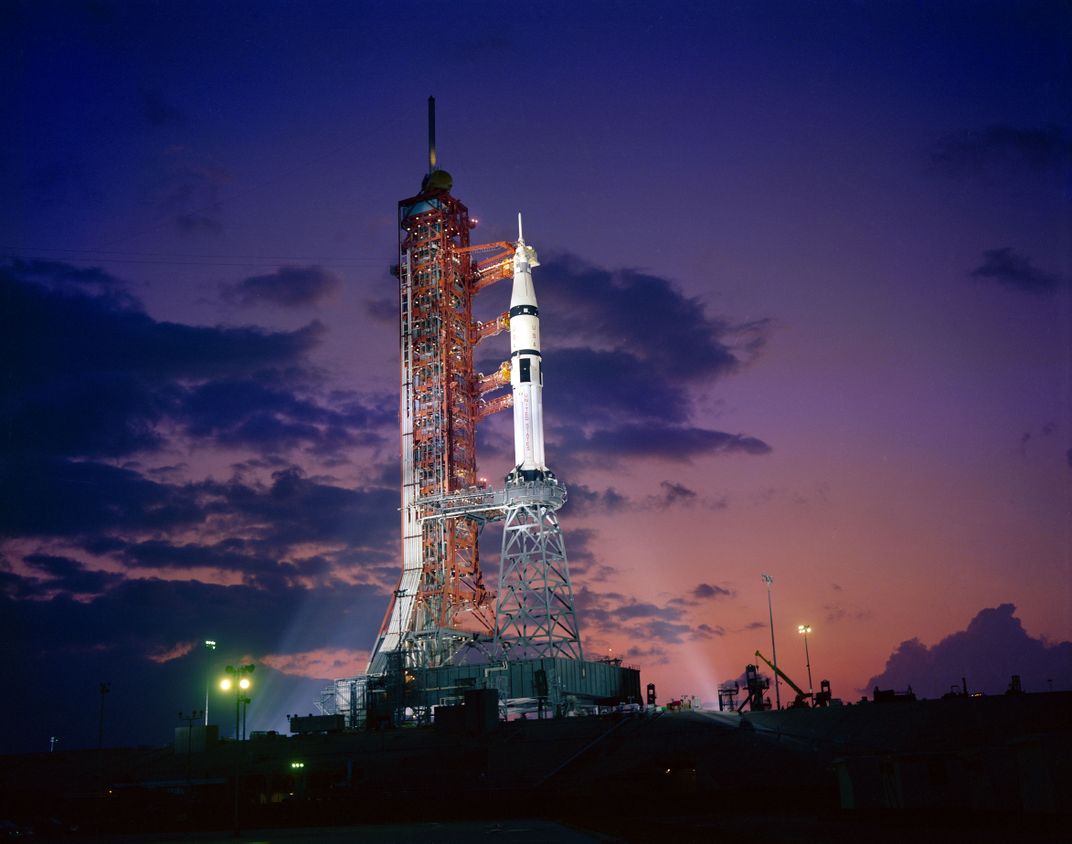
NASA’s next human spaceflight program, the Space Shuttle, was much delayed and on a tight budget, so the agency adapted LC-39 to the winged vehicle. KSC stacked the much shorter shuttle inside the tall bays of the VAB and took the gantry tower off the launch platform and installed it on the pad. The shuttle rode out to the launch pad on a bare platform. A rotating service structure then moved to cover the shuttle and provide access to the payload bay. The first shuttle launch left from 39A in April 1981, as did the next 23. Pad B’s refitting was delayed by budget problems, so its first launch unfortunately was the Challenger disaster of January 1986, killing Teacher-in-Space Christa McAuliffe and six NASA astronauts. After the shuttle returned to flight in 1988, the two pads were used almost equally for the next 20 years. Then B was taken out of service to retrofit for President George W. Bush’s soon-to-be-canceled Constellation Moon landing program.
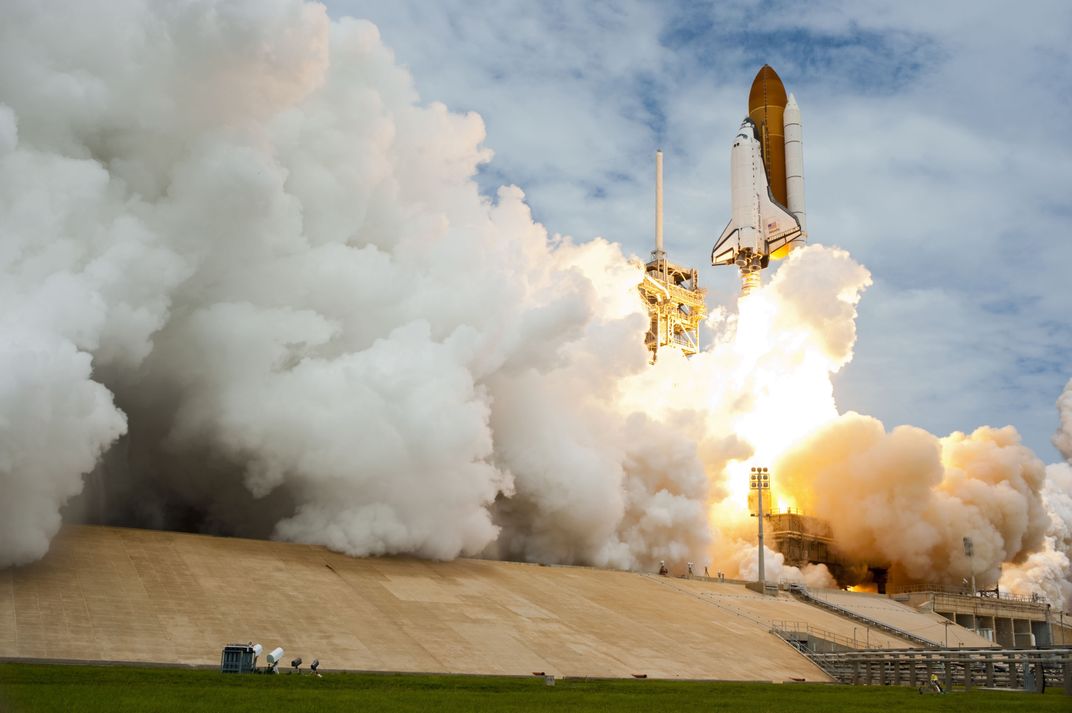
After the last shuttle mission in 2011, NASA, once again looking for ways to save money, decided to lease out Pad 39A. After a contentious bidding process, it awarded a 20-year lease to SpaceX in 2013/14. The company’s engineers have modified it so that it can host either Falcon 9 or Falcon Heavy (which has three Falcon 9 first stages bolted together) rockets. Whether the Russians have had any influence, I don’t know, but SpaceX built a horizontal assembly building next to 39A, with a wheeled erector/launcher to take the complete vehicle out and set it upright. It later added a new launch umbilical tower with an astronaut access arm for Crew Dragon launches on Falcon 9.
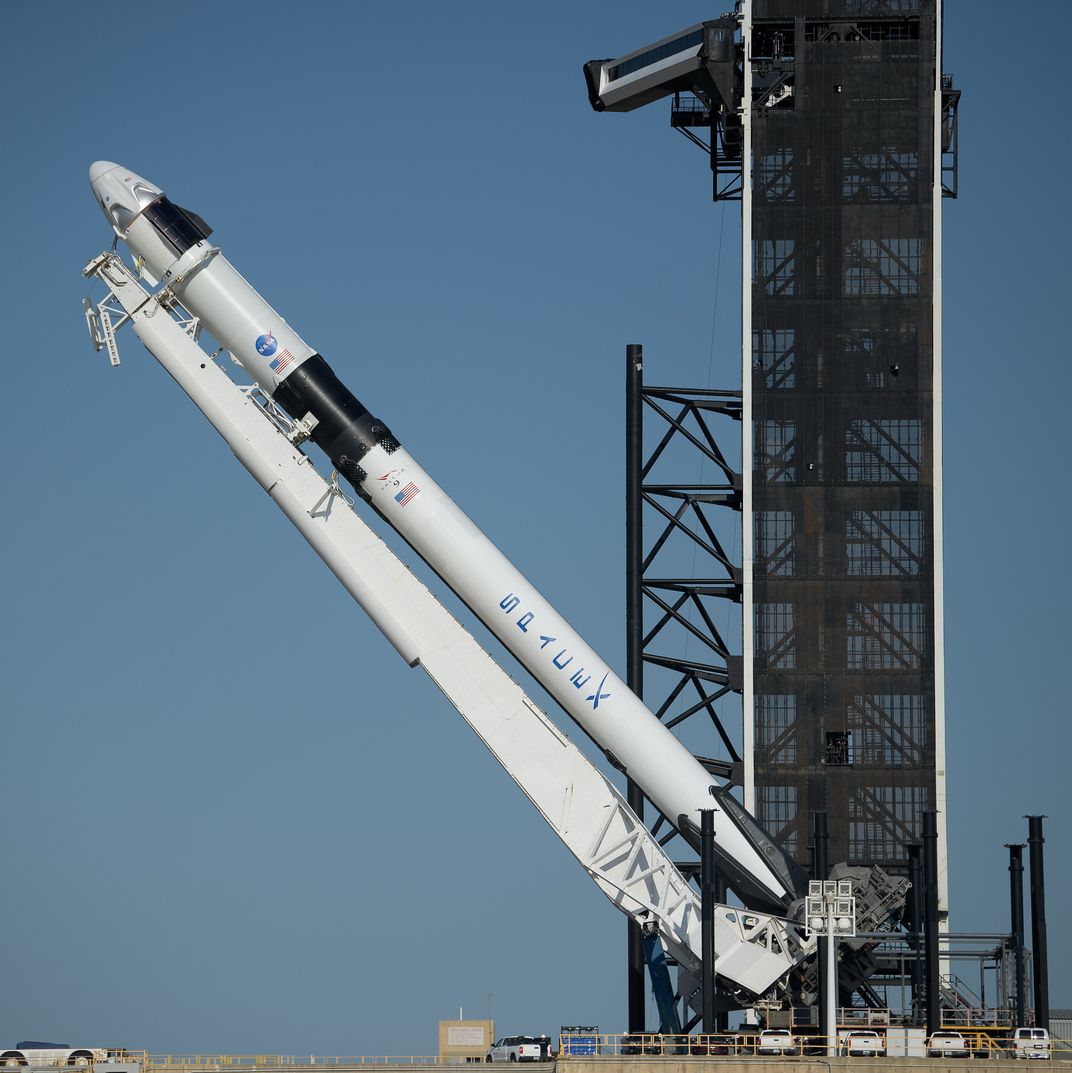
As for LC-39B, it has been outfitted for multiple vehicles, but its primary purpose will be to host the gigantic Space Launch System (SLS) rocket, a Saturn-V-sized monster that will send American astronauts to the Moon again. The first unpiloted test, Artemis 1, has repeatedly slipped, but is planned for late 2021. NASA recently completed the modification of the VAB, launch platforms, and the pad for SLS, so we will see the Crawler-Transporter hauling a rocket out to the launch pad again. In 2015, the agency also built a new 39C pad for small, commercial satellite launch vehicles, but it does not appear to have been used yet.
Thus, when Bob Behnken and Doug Hurley take off, they will ascend from a historic pad, one used for the first human trips to the Moon and many important shuttle flights. Launch Complex 39 will continue to support groundbreaking journeys in the human exploration of space well into the future, more than 50 years after its baptism-by-fire in the first Saturn V launch in 1967.
Michael J. Neufeld is a senior curator in the Museum’s Space History Department and is responsible for the rocket and missile and Mercury/Gemini spacecraft collections.
